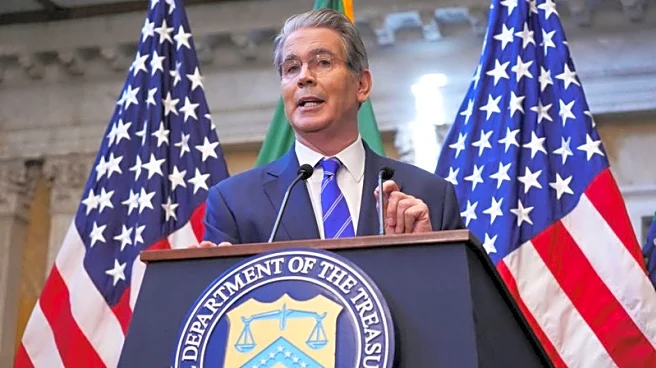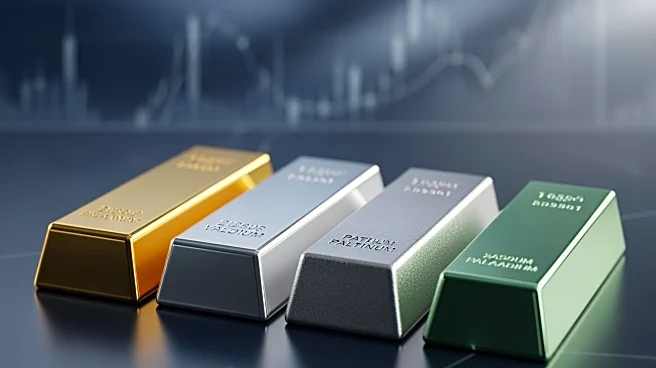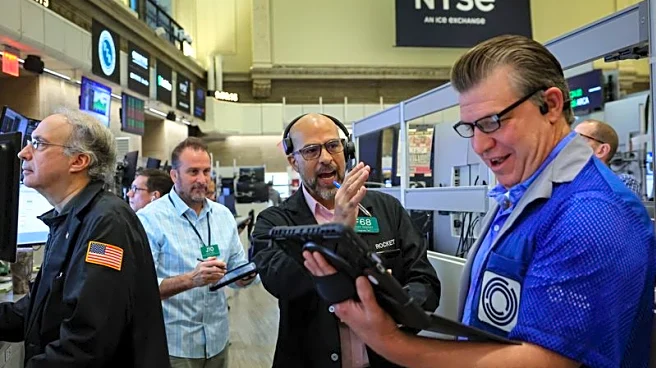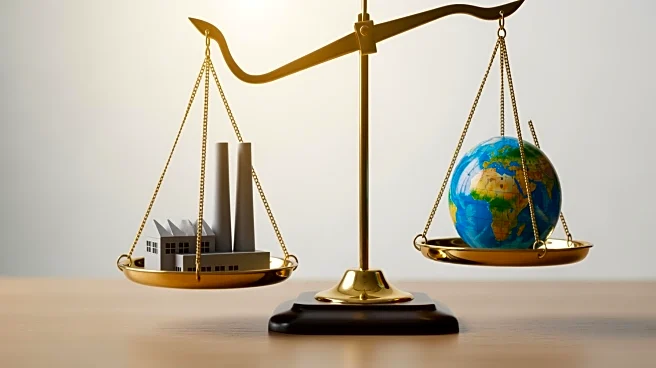What's Happening?
The global silver market is projected to experience its fifth consecutive structural deficit in 2025, driven by tightening supply, increased investor demand, and record prices. At the Silver Institute's annual industry dinner in New York, Metals Focus
MD Philip Newman and director of mine supply Sarah Tomlinson highlighted the market's challenges, including liquidity stress and geopolitical uncertainty. Silver prices have surged 67% year-to-date, outperforming gold and the S&P 500, with prices reaching an all-time high of $54.48 per ounce in October. Despite the price rally, global silver demand is expected to decrease by 4% this year, with declines in industrial, jewelry, bar, and coin segments. Investment demand, however, is offsetting these declines, with exchange-traded product holdings increasing by 18%.
Why It's Important?
The ongoing structural deficit in the silver market has significant implications for industries reliant on silver, such as electronics, solar energy, and jewelry. The price surge and increased investor demand reflect broader economic concerns, including stagflation and geopolitical risks. The designation of silver as a critical mineral by the US government underscores its strategic importance. The deficit may lead to continued price volatility, impacting manufacturers and investors. The market dynamics could influence policy decisions related to resource management and trade.
What's Next?
The silver market's structural deficit is likely to persist, with potential impacts on pricing and availability. Stakeholders, including investors and manufacturers, may need to adapt to changing market conditions. The US government's designation of silver as a critical mineral may lead to policy shifts aimed at securing supply chains. The market may see further adjustments as geopolitical tensions and economic uncertainties continue to influence investor behavior.
Beyond the Headlines
The silver market's challenges highlight broader issues related to resource management and sustainability. The increasing investor demand for silver reflects concerns about economic stability and geopolitical risks. Ethical considerations related to mining practices and environmental impact may gain attention as stakeholders seek sustainable solutions. The market's volatility underscores the need for strategic planning and risk management in industries reliant on silver.














